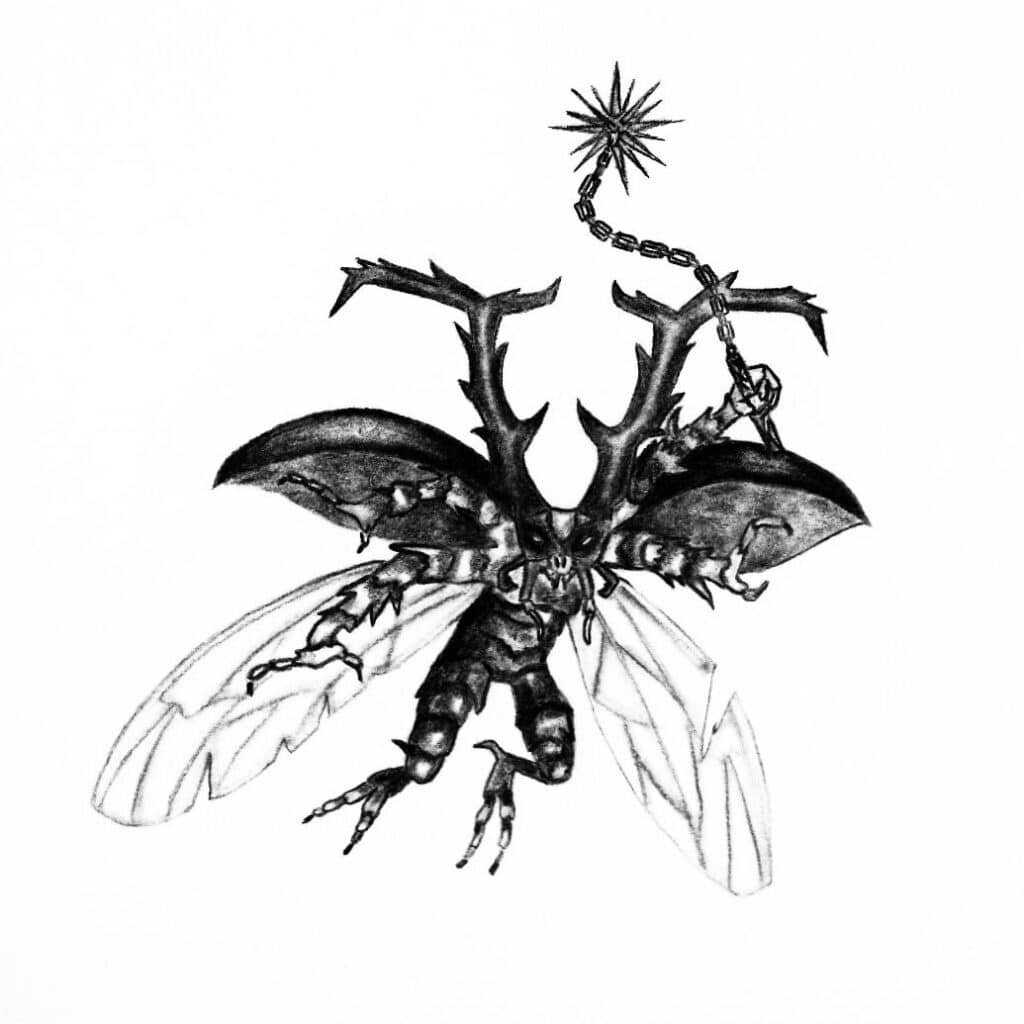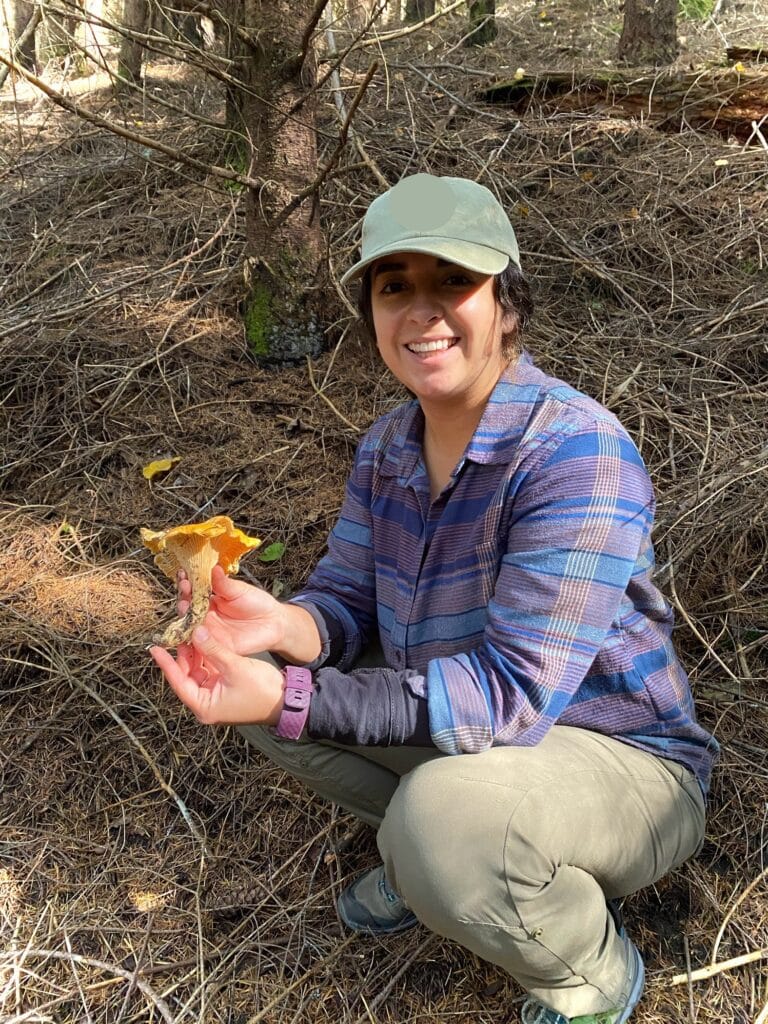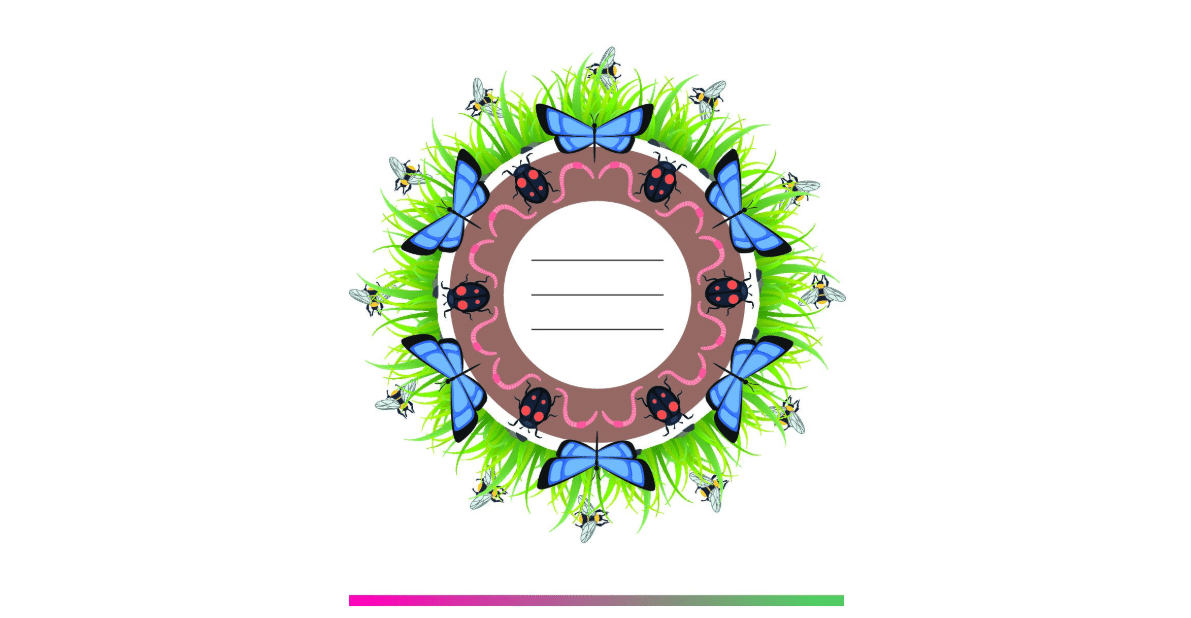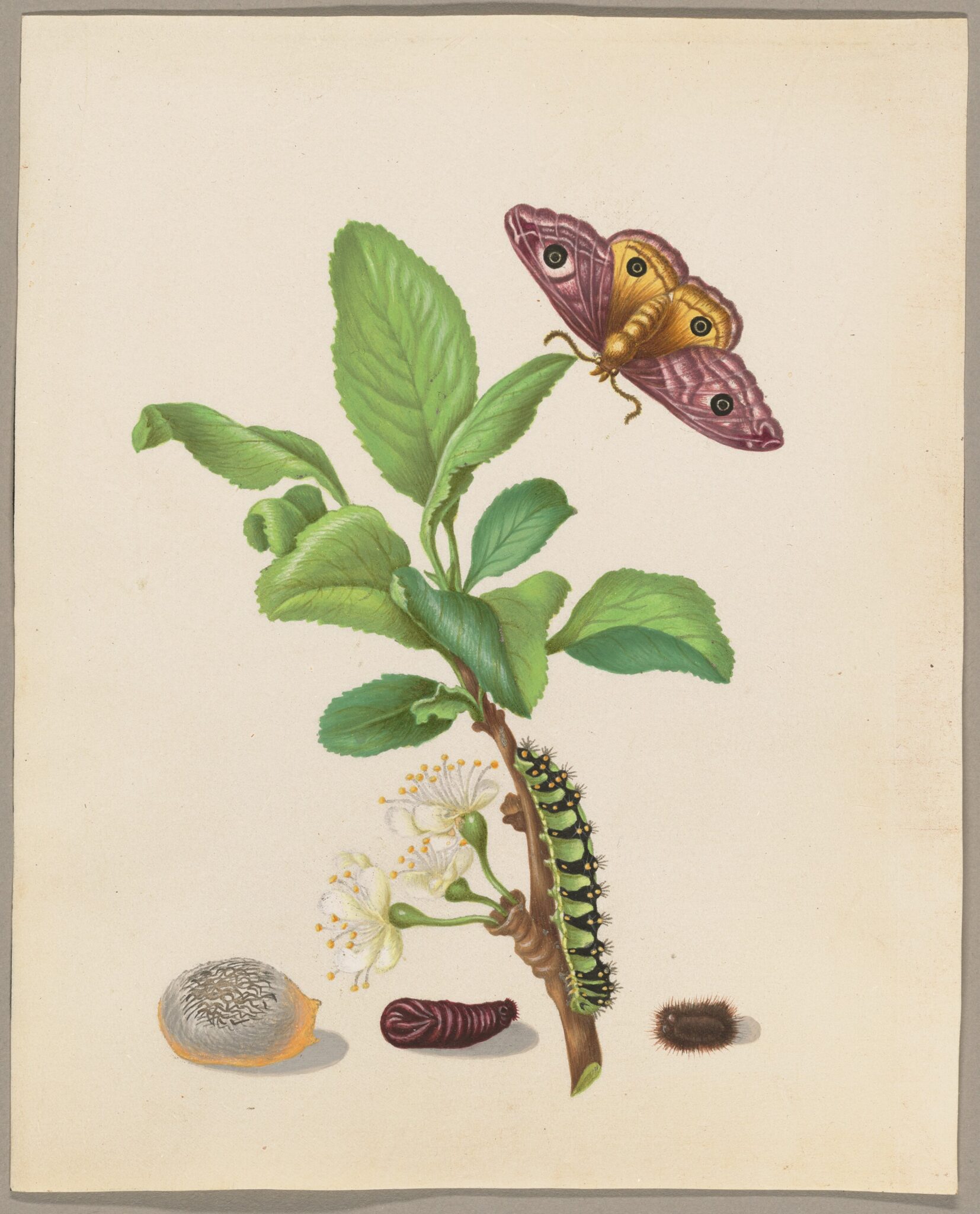Living Under The Rocks
The human and creature worlds are inseparable. By experiencing the perspective of creatures in our environment and understanding the cultural importance of creatures to communities, we can gain appreciation and empathy for the natural world. Similar to artists such as Christopher Marley and his Exquisite Creatures exhibit at OMSI, creators and conservationists bring new perspectives to protecting the natural world.
Tino’s Bug Life
Tiana Matsuko Bernard, known as Tino, combines their love for entomology and art to contribute to invertebrate conservation. Their early fascination with ants led to a career that included researching black flies and their parasites at an invertebrate conservation zoo. Tino’s artistic endeavors often feature detailed and vibrant depictions of insects, inspired by their diverse textures and colors.
Tino’s art encapsulates drawing as well as music. Starting as a single illustration, their series of creature art turned into a collection of unique pieces that pull aesthetics and techniques from their love of hardcore music and childhood background.
Nature’s Connectivity

Tino approaches environmental conservation with a holistic perspective, emphasizing the interconnectedness of all species and the urgent need to address human impacts on ecosystems. They highlight the alarming rates of species decline, attributing this crisis to unsustainable agricultural practices, deforestation, and the overuse of water and chemicals. Tino advocates for a return to Indigenous land management practices and a reevaluation of modern landscaping habits, like maintaining water-intensive grass lawns.
Art as Activism
Throughout human history, art has been a tool for political discourse. From quilts that were made during the Underground Railroad to lead enslaved Africans to freedom or Gran Fury’s use of guerilla tactics to bring about queer liberation, arts/design have been implemented to interrogate the world around us. In terms of environmentalism, art from the Hudson River School or contemporary examples shown at the Hammer Museum speak to rapidly changing ecosystems. These examples confront the viewer with the harsh realities of a changing climate while, simultaneously, inspiring them through nature’s beauty.
More Ideas
Tino’s Band – Midgut
Hammer Museum – Breath(e): Toward Climate and Social Justice
Metropolitan Museum of Art – Activism as Art
Valentina’s Journey
Valentina London is a habitat biologist passionate about conserving the natural environment, particularly in southwest Washington. Born in Chile, Valentina immigrated to the United States at the age of ten, where she pursued her dream of becoming a biologist despite facing challenges such as imposter syndrome and limited representation in her field. Her journey began with a transformative summer camp in the San Juan Islands, where an encounter with orca whales inspired her lifelong commitment to biology. Today, she serves as a pioneer for underrepresented groups, proudly representing Latina immigrants in conservation science.
What is a Habitat Biologist?
As a habitat biologist, Valentina focuses on protecting priority habitats and species in Washington state. Her work involves providing guidance to developers to balance urbanization with the needs of wildlife. For instance, she helps identify ways for people to build homes while preserving critical ecosystems, such as areas near streams that support fish populations. She also emphasizes the importance of habitat connectivity, ensuring that wildlife like deer and elk have uninterrupted access to their wintering ranges. Her efforts aim to prevent habitat fragmentation and maintain ecological balance even as development expands.

Coexisting with Nature
Habitat biologists, encompassing roles such as zoologists and wildlife biologists, study animals and their interactions within ecosystems. They focus on undomesticated species, analyzing behaviors, physical characteristics, and the impacts of human activities on natural habitats. Their work environments vary, including offices, laboratories, and outdoor settings where they gather data and observe wildlife in natural surroundings.
Specializations within this field include marine biologists, who study oceanic species, and conservation scientists, who manage land quality in forests, parks, and other natural resources. These professionals often utilize geographic information systems (GIS) and modeling software to estimate wildlife populations, track animal movements, and assess environmental threats.
Become a Naturalist
Now it is time to go out and explore nature while recording what you see. Much like naturalists of the past, you can depict your surroundings in vivid detail. Follow these steps to get started.
- OMSI field guide OR a notebook/paper of your choice
- Drawing utensils
- Magnifying glass

OMSI Field Notebook
Stretch your legs and get some fresh air. Find a local wilderness area, park, or backyard to look for flora (plants) and fauna (animals) native to your area.
Observe closely of your surroundings. Check under logs and rocks for insects or other creatures to illustrate in your journal.
Use your drawing utensils to illustrate your findings. Be sure to mark where you found them for future reference.
Once you have your drawings, try using online resources such as BugFinder to find what insects you observed. Write the scientific names next to your drawing once you identify them.
What’s the History?
Throughout history, nature illustrations have been essential in documenting and understanding the natural world. Early naturalists such as Leonardo da Vinci and Albrecht Dürer set the foundation for later works, creating detailed sketches of plants, animals, and human anatomy. These early works were not only artistic but also served as scientific records. As the field of natural history progressed in the 17th and 18th centuries, detailed botanical and zoological illustrations became crucial for classification and research.

In the 18th century, naturalists like Maria Sibylla Merian (work shown above)advanced nature illustration. Merian, known for her meticulous depictions of insects and plants, documented the life cycles of various species, including those in Suriname. Her work was groundbreaking in the way it depicted the dynamic relationships between species in their natural environments.
Illustrations by these naturalists helped bridge the gap between science and art, bringing to life the diverse ecosystems of the world. They provided visual evidence that complemented the written observations of explorers, expanding knowledge and interest in the natural sciences. These illustrations, often seen today in museum collections and academic texts, continue to inspire both scientific inquiry and artistic expression.
More Ideas
Learn more about Maria Sibylla Merian
More Examples of Naturalist Illustrations
OMSI Exhibit – Exquisite Creatures Revealed
Thanks to our Sponsor
This project is made possible through grants from the following organizations.
